The Dell Venue 8 7000 Series Review
by Brandon Chester on March 12, 2015 8:00 AM EST- Posted in
- Tablets
- Dell
- Android
- Mobile
- Venue 8 7000
GPU Performance
GPU performance is another important aspect of a device, and with display resolutions increasing there is always a need for more GPU power to drive more pixels. In the eyes of many consumers, Intel is not typically associated with speedy GPU performance, particularly in the mobile space. Many readers commented on the poor performance of Intel's HD Graphics in the Stream 7 review. However, one of the ways Intel's Moorefield chips are differentiated from some other chips in the Atom line is that they use PowerVR graphics. In the case of the Venue 8, it uses the PowerVR G6430 which was used previously in Apple's A7 chip.
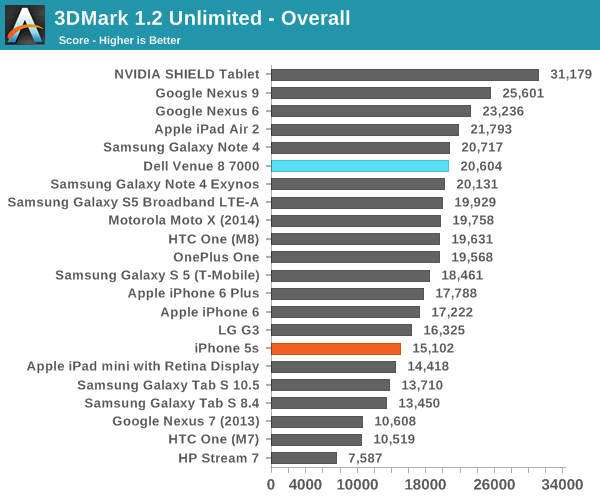
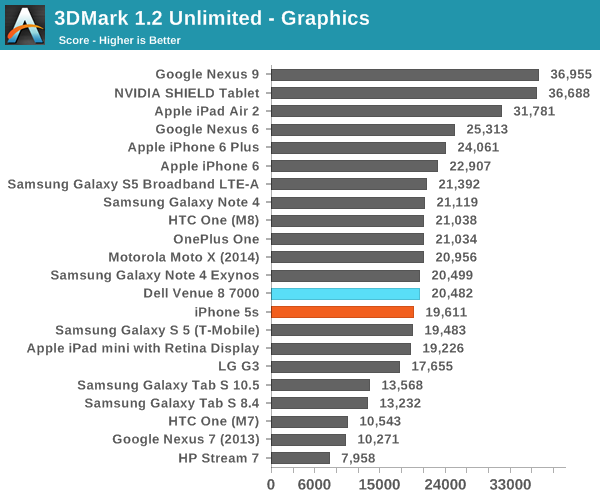
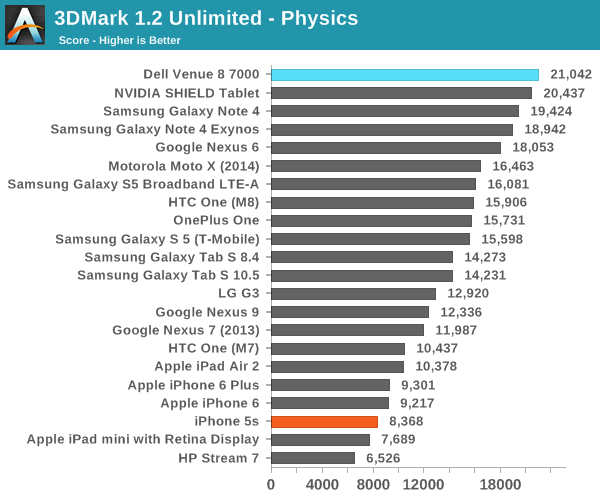

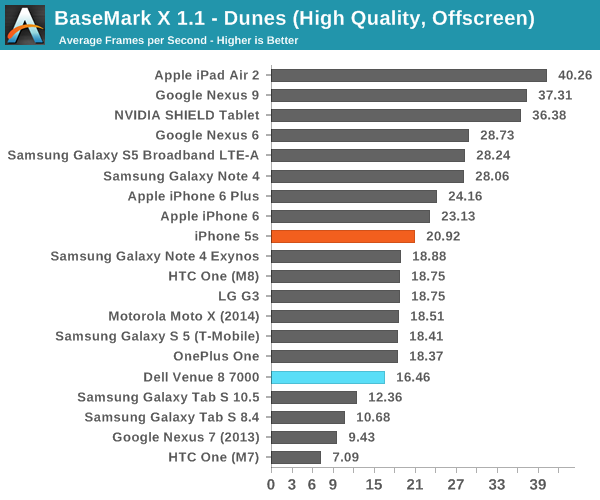
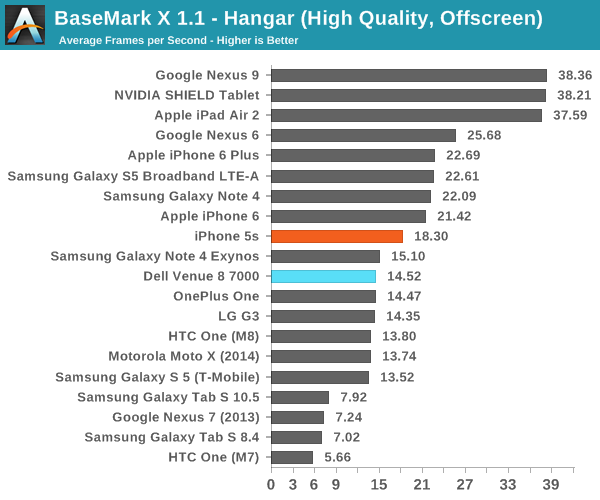
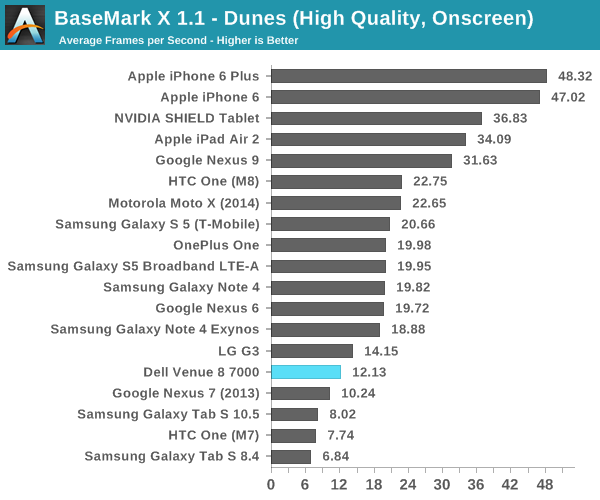
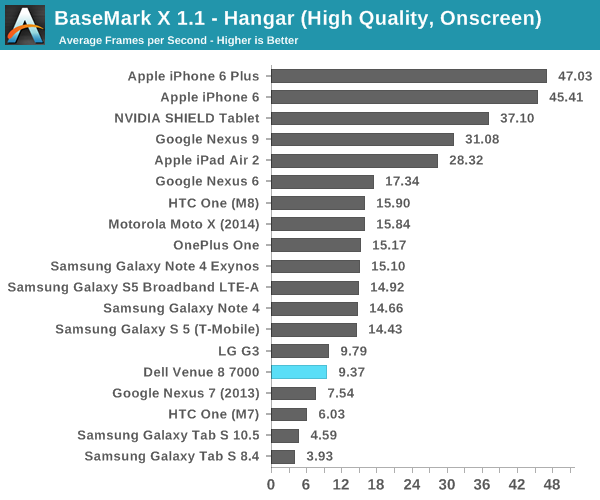
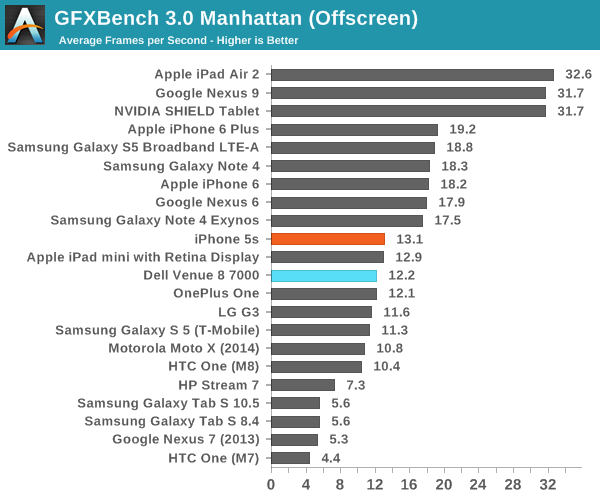
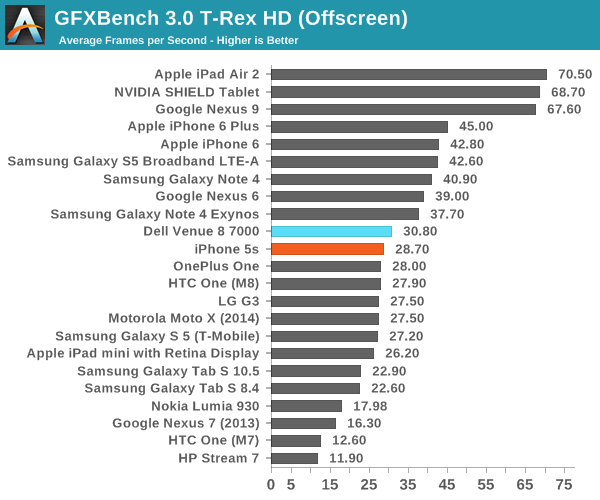
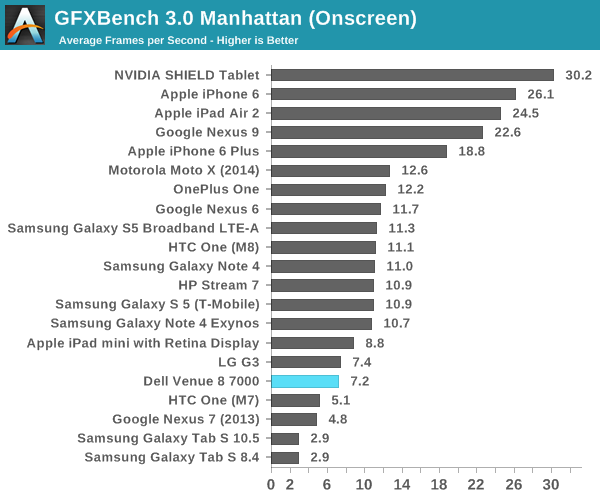
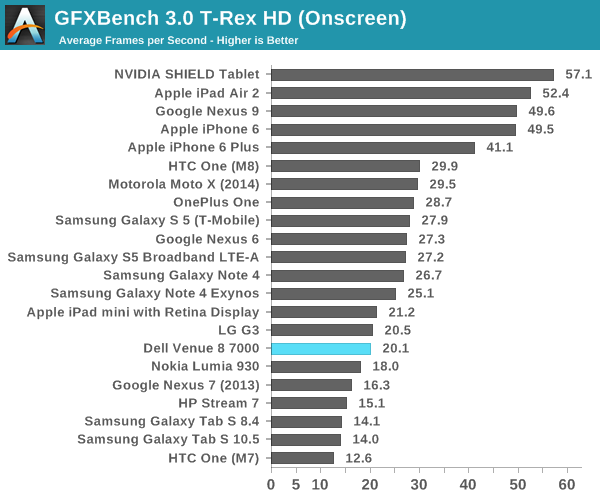
There has historically been a noticable gap in performance between a given PowerVR chip implemented in an iOS device, and the same GPU in an Android device. Due to drivers and other software factors, the performance of the Android device is typically slower. Because of this, I've marked the iPhone 5s on all the charts except for the onscreen ones so comparisons can be drawn between the performance of the G6430 GPU on different operating systems. In the 3DMark graphics test, the Venue 8 actually scores higher than the iPhone 5s, and in the GFXBench tests there is not a large difference between the two devices. In Basemark X there is a sizable performance difference between the two devices in favor of the iPhone, but overall I don't think anyone should be concerned about massive differences in GPU performance between the G6430 running on iOS and it running on Android.
When evaluating the Venue 8's GPU performance on its own, it can hardly be said that it's slow. However, it's now competing with Apple's 8 core Rogue GPU in A8X, and NVIDIA's Kepler graphics in Tegra K1. The devices with those GPUs end up performing between two and three times faster than the Venue 8 in many cases, and with Tegra K1 that GPU power is available in NVIDIA's Shield Tablet which undercuts the Venue 8 at only $299. GPU performance has simply moved onward from when G6430 was leading the pack, and although the Venue 8 isn't exactly slow, it's outgunned by other devices that meet and even beat its price.
NAND Performance
The performance of a device's internal storage has never been a large point of focus in the past. Mobile device manufacturers don't advertise anything about their storage beyond the capacity. However, the speed of a device's NAND can have a significant impact on performance. Slow memory can be what bottlenecks a system's performance when any sort of heavy reading or writing is occurring in the background, which occurs more often than one would think due to background applications and tasks like automatically downloading and installing app updates.
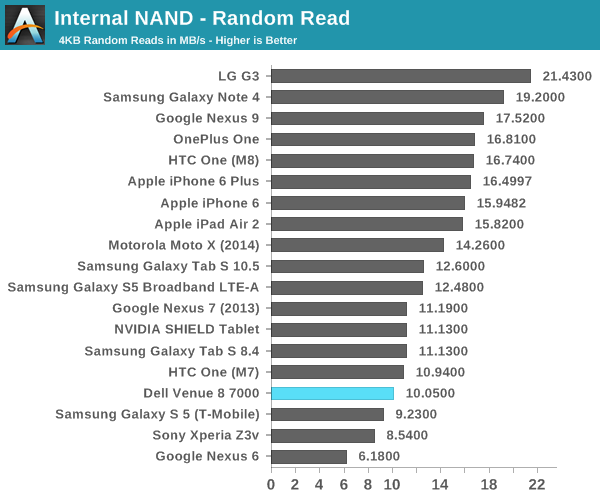

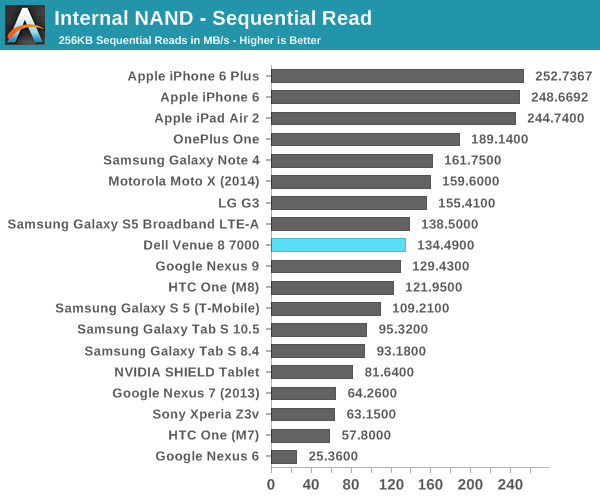
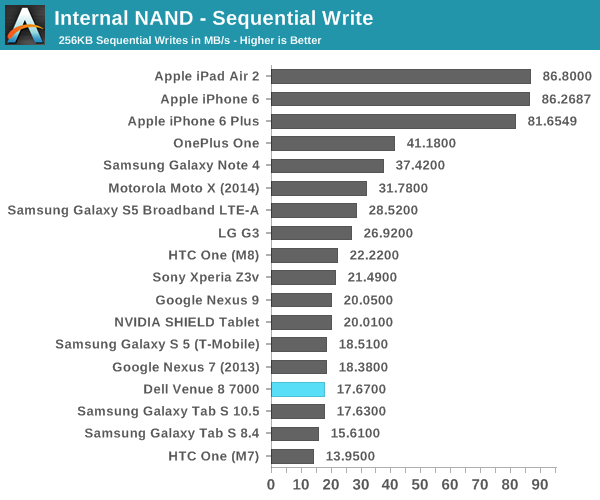
In all of our tests, the Venue 8 is decidedly average. There's no situation where it shines at the top, but also no cases where it's significantly worse than the competition. I wouldn't expect the Venue 8's storage speeds to cause any performance issues for users, though it would be nice to see at 32GB NAND option at this price.










89 Comments
View All Comments
Drumsticks - Thursday, March 12, 2015 - link
Indeed. I haven't noticed a slowdown on any of my devices, including a surface Pro 1 and a 4570k based PC.Sushisamurai - Sunday, March 15, 2015 - link
Ditto, IPad Air 2, iPad retina mini, ivy-bridge i7-U, my mother of a desktop, iPhone 4S and even my Nokia 830 run this fine. :(Ryan Smith - Thursday, March 12, 2015 - link
If you could please email me some screenshots of the ads in question, I will have it looked it.http://www.anandtech.com/Author/85
damianrobertjones - Thursday, March 12, 2015 - link
Read the specs, all sounded good, until I reached "Android 4.4.4 KitKat".Oh well.
Michael Bay - Thursday, March 12, 2015 - link
You should have stopped at Android.Michael Bay - Thursday, March 12, 2015 - link
Android?Jesus, what a way to kill a perfectly fine hardware mix.
Azurael - Thursday, March 12, 2015 - link
They make a Venue 8 Pro if you want to run Windows/Linux... Pretty dull looking, but at least it doesn't have stupid bezels.Azurael - Thursday, March 12, 2015 - link
If anybody wants a point of comparison with a Haswell-Y tablet, my i3 4020Y-based Dell Venue 11 scores the following running an Android-x86 5.0.2 build from a few days back (it's an x86_64 kernel w/ 32-bit userspace):Kraken 1.1 - 2741.8ms
Octane 2.0: 10668
WebXPRT kills Chrome for some reason (as does one of Vellamo's benchmarks) - I'm assuming that's something to do with the MESA/i915/Android interaction that Android-x86 creates. It worked under 4.4 and 5.0 is unofficial and buggy ATM.
BaseMark OS 2 hates this thing:
Overall: 1361
System: 1893
Memory: 1486
Graphics: 1572
Web: 776
And I know AT don't use it, and it's not exactly known for accuracy and consistency but AnTuTu 5.6.1: 50757
There's a lot of optimisation to be done, and it'd be nice to get 64-bit userspace working... But if Intel's slowest Haswell dual core can do that, think what the higher spec devices could do!
Kidster3001 - Wednesday, April 1, 2015 - link
Basemark OS2 for Android scores incredibly poor on all x86 devices. I don't recommend it as a benchmark for Android.darkich - Thursday, March 12, 2015 - link
"With generational improvements to their processors, it's not hard to imagine Intel becoming a major performance leader in the mobile space"In your dreams?
How in Earth will Intel even come remotely close to achieving that in the light of Tegra X1, Exynos 7420, and upcoming army of Cortex A72 based chips?!?
Wow, their newest Atom- built on a superior process to any of the compared chips, some of which being more than a half year old - held its
ground in CPU, and got owned in GPU tests.
I'm amazed at how your Intel has can translate that into some kind of promising prospect for Intel.
Wake up and see that in reality, Intel IS FAR BEHIND, and has nothing to counter the upcoming ARM chips.
The next Atom is basically a die shrink of Silvermont, and should be absolutely demolished by 14-20nm chips with Cortex A72 and Kryo CPU cores.